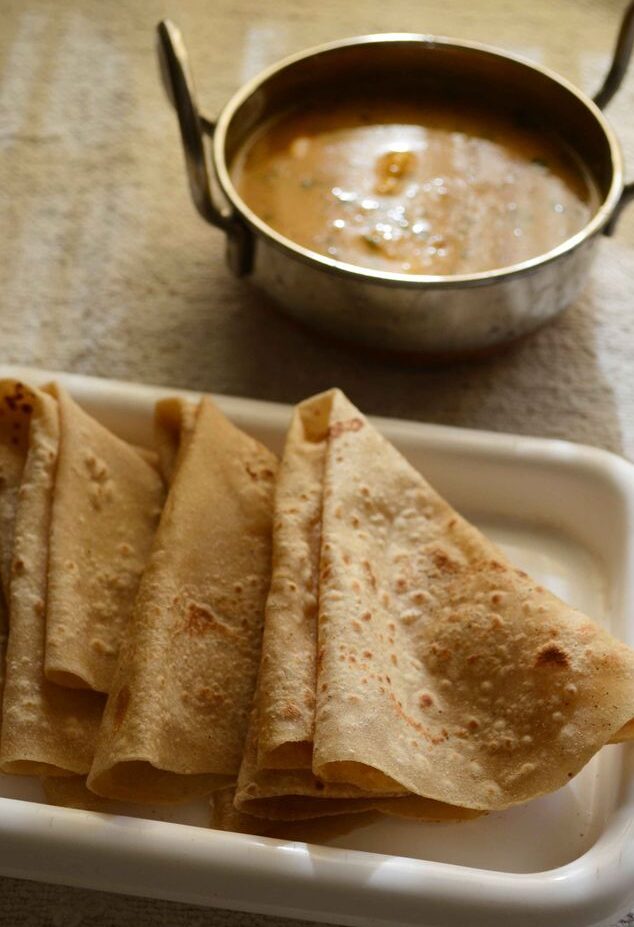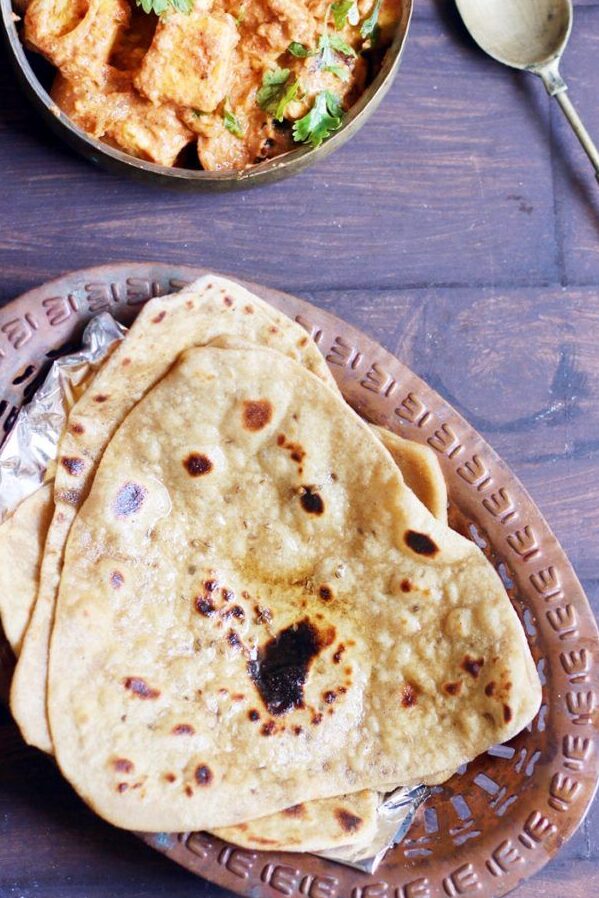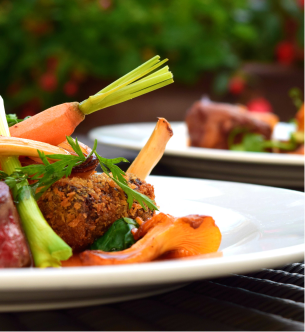Shahi Paneer Recipe
🧺 Ingredients
For the Gravy Base:
- 2 tbsp ghee or oil
- 1 tbsp butter (optional, for richness)
- 1 bay leaf (tej patta)
- 3–4 green cardamoms (elaichi)
- 4–6 cloves (laung)
- 1-inch cinnamon stick (dalchini)
- 1 tsp cumin seeds (jeera)
Vegetables:
- 2 medium onions, thinly sliced
- 1 tbsp chopped ginger
- 1 tbsp chopped garlic
- 2–3 green chilies (slit, adjust to heat preference)
- 2 large tomatoes, chopped
For the Creamy Cashew Paste:
- 12–15 cashews (soaked in warm water for 15–20 minutes)
- 2 tbsp melon seeds or poppy seeds (optional)
- 3 tbsp fresh cream or malai
Spices:
- 1 tsp red chili powder
- ½ tsp turmeric powder
- 1½ tsp coriander powder
- ½ tsp garam masala
- Salt to taste
- ½ tsp sugar
Main:
- 200–250g paneer, cubed
- 2–3 tbsp fresh cream (for garnish)
- ½ tsp kasuri methi (dried fenugreek leaves), crushed
- Few saffron strands soaked in 2 tbsp warm milk (optional)
🥘 Instructions
1. Prep Work
- Soak cashews (and melon/poppy seeds, if using) in warm water. Blend into a smooth paste.
- Cube the paneer and soak in warm water if store-bought.
- Optional: Lightly pan-fry paneer for a firmer bite.
2. Make the Gravy Base
- Heat ghee and butter in a heavy-bottomed pan.
- Add cumin, bay leaf, cardamom, cloves, and cinnamon. Sauté for a few seconds.
- Add onions and cook till golden brown.
- Add ginger, garlic, and green chilies. Cook for 2–3 minutes.
- Add chopped tomatoes and cook until soft and oily.
- Let it cool slightly, then blend to a smooth puree.
3. Cook the Shahi Gravy
- Return the puree to the pan. Add the cashew paste and cook for 5–6 minutes until thick and creamy.
- Stir in chili powder, turmeric, coriander, salt, and a splash of water. Simmer for 5 minutes.
- Add paneer, kasuri methi, and sugar. Simmer gently.
- Stir in saffron milk (if using), cream, and garam masala. Turn off heat.
🤍 What It Feels Like to Eat Shahi Paneer
Imagine dipping a piece of warm, pillowy naan into a rich, velvety gravy that clings to every corner. The moment it touches your tongue, you’re greeted with a creamy, nutty sweetness followed by layers of aromatic spices—subtle yet luxurious. The paneer melts in your mouth like soft clouds, offering a mild contrast to the deep, regal richness of the gravy. It’s not just food—it’s comfort, indulgence, and celebration all rolled into one bite.
Best Breads to Eat with Shahi Paneer
Shahi Paneer pairs beautifully with a range of Indian breads. Here are the best options:
1. Butter Naan
Soft, fluffy, and lightly charred—perfect to scoop up the thick, creamy gravy.
2. Tandoori Roti
Slightly crisp and chewy, this unleavened bread balances the richness of the dish.
3. Laccha Paratha
Multi-layered and buttery, it adds a flaky texture that complements the smooth curry.
4. Roomali Roti

Thin and soft like a handkerchief, this delicate bread wraps beautifully around chunks of paneer. Roomali Roti is a unique and elegant Indian flatbread, renowned for its extraordinary thinness, softness, and almost handkerchief-like texture, hence the name “roomali,” which literally means “handkerchief” in Hindi and Urdu. Originally from the royal kitchens of North India, especially during the Mughal era, roomali roti has since become a staple in North Indian and Mughlai cuisine, often served in restaurants alongside rich and flavorful curries or grilled meats.
What makes roomali roti stand out is the artistry involved in its preparation. The dough is made from a mix of all-purpose flour (maida) and sometimes whole wheat flour, kneaded to a soft and elastic consistency. Once rested, the dough is rolled—or more traditionally, tossed into an ultra-thin, almost translucent sheet. Skilled chefs often toss and stretch the dough in the air, using a technique similar to pizza making, until it becomes large and paper-thin.
The cooking method is just as distinctive. Roomali roti is cooked on an inverted, concave iron griddle called a tandoor dome or ulta tawa, which is heated to an extremely high temperature. The dough is quickly laid over the hot surface, where it cooks in a matter of seconds, just enough for light brown spots to appear while keeping the bread soft and pliable. It’s typically folded like a napkin before serving, emphasizing its delicate, cloth-like feel.
Mild in flavor, roomali roti is prized not for bold taste but for its ability to complement and balance intense dishes like butter chicken, kebabs, korma, or spicy biryanis. Its soft texture makes it ideal for scooping up thick gravies and wrapping around grilled meats or vegetables, functioning almost like a natural edible wrap.
Eating roomali roti is as much about the experience as it is about the flavor, its softness, warmth, and the almost theatrical preparation make it a memorable part of any meal. Light, airy, and incredibly tender, roomali roti brings a sense of refinement to the Indian breadbasket.
5. Kulcha
Stuffed (or plain) kulchas offer a mildly tangy bite that enhances the Mughlai flavor. Kulcha is a soft, leavened Indian flatbread that holds a special place in North Indian cuisine, particularly in Punjab and parts of Delhi. Unlike the more common chapati or roti, kulcha is made from refined flour (maida), which gives it a light, fluffy texture with a slightly crisp exterior when cooked properly. It is traditionally baked in a tandoor (clay oven), though it can also be made on a tawa (griddle) or in a conventional oven at home.
What sets kulcha apart is its pillowy softness and the subtle tang in its flavor, often achieved by fermenting the dough with a bit of yogurt and baking soda or yeast. This fermentation process not only makes the bread more airy and tender but also imparts a mild sourness that pairs beautifully with spicy gravies. The surface of the kulcha is typically speckled with golden brown blisters and sometimes garnished with a sprinkle of sesame seeds, chopped coriander, or nigella seeds (kalonji) for added flavor and texture.
Kulchas come in a variety of styles, from the classic plain kulcha to the more indulgent stuffed versions, like aloo kulcha (with spiced mashed potatoes), paneer kulcha (stuffed with crumbled cottage cheese), or even mixed vegetable variants. These stuffed kulchas are usually brushed with butter and served hot, making them a hearty, standalone meal when paired with a side of curd or pickle.
However, kulcha’s most iconic companion is the rich and spicy chole (chickpea curry), a combination so beloved that “Chole-Kulche” is now a street food staple in North India. The contrast between the fluffy bread and the robust, tangy curry creates a deeply satisfying experience, both in terms of flavor and texture.
Whether served as a part of a festive meal or relished as street food from a roadside vendor, kulcha is more than just bread, it’s a culinary comfort, rooted in tradition, yet endlessly adaptable to personal tastes.

6. Plain Paratha or Ajwain Paratha
Great for adding a rustic feel and mild spice to the royal dish. Ajwain parantha is a simple yet flavorful Indian flatbread, known for its distinct, earthy aroma and digestive benefits. Made from whole wheat flour, the dough is kneaded with a pinch of salt and carom seeds (ajwain), which give the parantha its signature taste, a warm, slightly bitter, and peppery flavor that lingers pleasantly on the palate.
The dough is rolled out into discs, then shallow-fried on a hot tawa with a touch of ghee or oil until golden brown spots appear, crisp on the outside but still soft inside. The ajwain seeds not only add a burst of flavor but also help in digestion, making this parantha a favorite comfort food in many Indian households, especially when served hot with a dollop of butter, tangy pickle, or plain curd.
Often eaten for breakfast or a light dinner, ajwain parantha is a perfect example of how minimal ingredients can come together to create something deeply satisfying.




